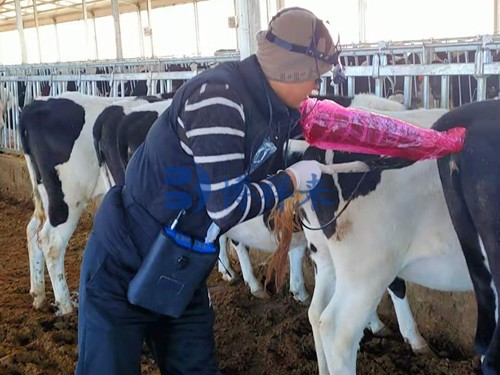Veterinary ultrasound technology has become a commonly used testing equipment in the pig industry, and veterinary ultrasound machines can be used for breeding, feeding management, and breeding management. It has become an indispensable tool for evaluating backfat thickness and lumbar muscle depth. Ultrasound is a commonly used tool in the breeding process to reduce the total fat content of pig carcasses and meet the needs of consumers seeking slimmer meat pieces.
However, the efficiency of this selection also reduces the level of intramuscular fat (IMF) in meat. GIM is usually associated with marble patterns, which are the visible fat when examining a piece of meat. However, GIM can affect the taste quality of meat, including juiciness and flavor. For pork tenderloin, the recommended low GIM level is 2%. This GIM content is required to prevent meat from being too dry and tasteless. However, a significant portion of the pork sold in our grocery store falls below this threshold.
Place the ultrasound probe on the back of the pig
The measurement site on live pigs is used to evaluate the GIM of the waist and visualize images obtained through ultrasound. The probe is located at the level of the 10th rib of the pig, about 5 cm away from the dorsal line.
Therefore, developing a selection tool based on the GIM rate of pork tenderloin would be a true asset for preserving or improving meat taste quality.
The demand for meat chunks with high GIM content (including tenderloin) in several export markets is also a major argument supporting the development of selection tools based on this standard. In fact, about 50% of the pork produced in Canada is exported. Among all buyers, the Asian market accounts for over 45% of meat and cash export revenue. However, surveys conducted among Japanese consumers have confirmed that they prefer pork containing 3% or more GIM. Therefore, it is necessary to increase the GIM level in the Canadian pig population to maintain domestic and international markets.
GIM is a trait with good heritability. About 50% of waist GIM variation between individuals can be attributed to genetics, which means it can be rapidly increased through genetic selection. However, to make selection based on characters, it is first necessary to be able to measure them with sufficient accuracy.
According to the GIM at the waist, pigs currently need to be slaughtered. Therefore, selection is made through offspring and collateral relationships. The known methods for evaluating meat GIM are visual assessment and chemical analysis. Visual assessment is a subjective method that requires cutting the waist. Chemical analysis conducted in the laboratory is a slow and expensive method that requires sampling from the waist. These technologies can only be used for a limited number of animals, thereby reducing the chances of genetic selection








